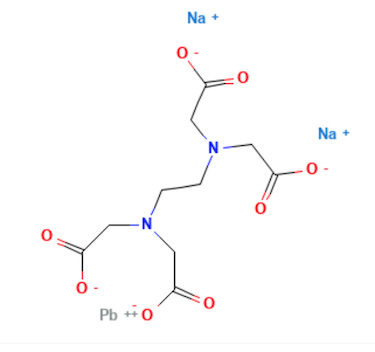How to recognize and treat lead poisoning
Just how bad is lead poisoning in the world?
In a new study published Sept 2023 in The Lancet Journal it was revealed that lead poisoning in the world is as serious as global pollution...
"...We estimated that children younger than 5 years lost 765 million (95% CI 443–1098) IQ points and that 5 545 000 (2 305 000–8 271 000) adults died from cardiovascular disease in 2019 due to lead exposure. 729 million of the IQ points lost (95·3% of the total global IQ loss) and 5 004 000 (90·2% of total) cardiovascular disease deaths due to lead exposure occurred in LMICs. IQ loss in LMICs was nearly 80% higher than a previous estimate. Cardiovascular disease deaths were six times higher than the GBD 2019 estimate. The global cost of lead exposure was US$6·0 trillion (range 2·6–9·0) in 2019, which was equivalent to 6·9% (3·1–10·4) of the global gross domestic product..." source
What are some ways to get lead poisoning?
Lead, a naturally occuring metal is found in many common household products. It has been used in a wide variety of products including gasoline, paint, plumbing pipes, ceramics, solders, batteries, and even cosmetics. And lead is at times found in foods. Lead may be present in food because it is in the environment where foods are grown, raised, or processed.
The most common causes of lead poisoning are lead-based paint and lead-contaminated dust in older buildings.
What are symptoms of lead poisoning?
Lead exposure can cause high blood pressure and brain, kidney and reproductive health issues in adults. Symptoms of lead poisoning include headaches, stomach cramps, constipation, muscle/joint pain, trouble sleeping, fatigue, irritability, and loss of sex drive. Most adults with lead poisoning don't look or feel sick.
Blood tests can be used to detect lead poisoning. While there is no safe blood level of lead, a level of 5 micrograms per deciliter (mcg/dL) is used to indicate a possibly unsafe level for children. Children whose blood tests at those levels should be tested periodically. A child whose levels become too high — generally 45 mcg/dL or higher — should be treated.
Why is lead poisoning so dangerous especially to children?
"...Exposure to lead can seriously harm a child's health and cause well-documented health effects, including damage to the brain and nervous system, slowed growth and development, learning and behavior problems, and hearing and speech problems...Children under the age of 6 are at greatest risk for health problems caused by lead exposure. The health effects of lead exposure are more harmful to younger children than older children and adults because their bodies are still developing, and they are growing so rapidly. Young children also tend to put their hands or other objects, which may be contaminated with lead dust, into their mouths." .source
How to treat lead poisoning?
Lead poisoning is treated with chelation therapy.
In this treatment, a medication given by mouth binds with the lead so that it's excreted in urine. Chelation therapy might be recommended for children with a blood level of 45 mcg/dL or greater and adults with high blood levels of lead or symptoms of lead poisoning.
Currently, EDTA (Ethylenediaminetetraacetic acid) is FDA-approved for the treatment of lead poisoning in adults and children. EDTA has the ability to bind lead tightly and is more effective than other common chelators.
What is the mechanism that allows lead to be removed from the body?
EDTA binds lead and other metals, forming a compound that the body can eliminate in the urine. The process generally takes 1 to 3 hours. Below is shown the EDTA molecule bound to lead (Pb).

Sources and Readings
Global health burden and cost of lead exposure in children and adults: a health impact and economic modelling analysis ---The Lancet
Lead poisoning ---Mayo Clinic
Health Effects of Lead Exposure ---CDC
Ethylenediaminetetraacetic acid -- Mount Sinai Hospital
Lead in Food, Foodwares, and Dietary Supplements --- FDA
Unsafe lead levels in school drinking water: new study IDs building risk factors -- Science Daily Nov. 2023